Connected Healthcare
Connected Healthcare
In a new survey, Trusted Future found Americans are adopting a broad range of connected health technologies to improve their daily lives, and believe emerging technologies hold great promise for helping people improve health outcomes, live healthier lifestyles, improve preventative care, and gain access to remote care anytime, anywhere. But to enable these health gains – and help Americans live longer and healthier lives – consumers need to be able to trust that their technologies will be effective at protecting their most sensitive health data.
In a new survey, Trusted Future found Americans are adopting a broad range of connected health technologies to improve their daily lives, and believe emerging technologies hold great promise for helping people improve health outcomes, live healthier lifestyles, improve preventative care, and gain access to remote care anytime, anywhere. But to enable these health gains – and help Americans live longer and healthier lives – consumers need to be able to trust that their technologies will be effective at protecting their most sensitive health data.
Over the last few years, major breakthroughs in connected health technologies have enabled Americans to improve their health in previously unimaginable ways. Smartphones, for example, have put many of these advances right in the palms of our hands, on our wrists, and increasingly in our future. Wearables, connected devices, and software apps are empowering users to take greater control of their own health with tools that help users live longer, healthier, more fulfilling lives. Together these technologies are driving one of the biggest and most fundamental transformations in health care.
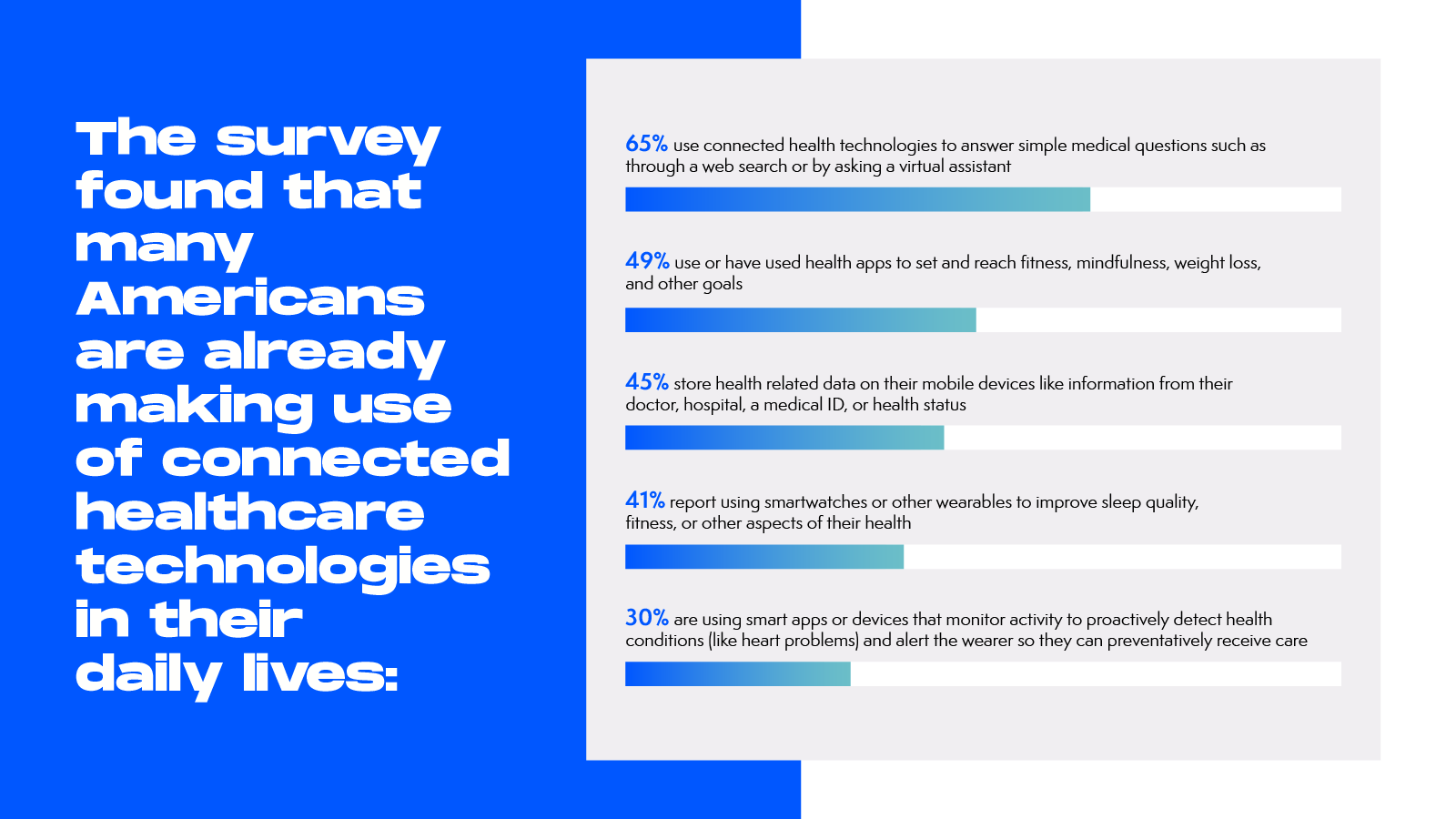
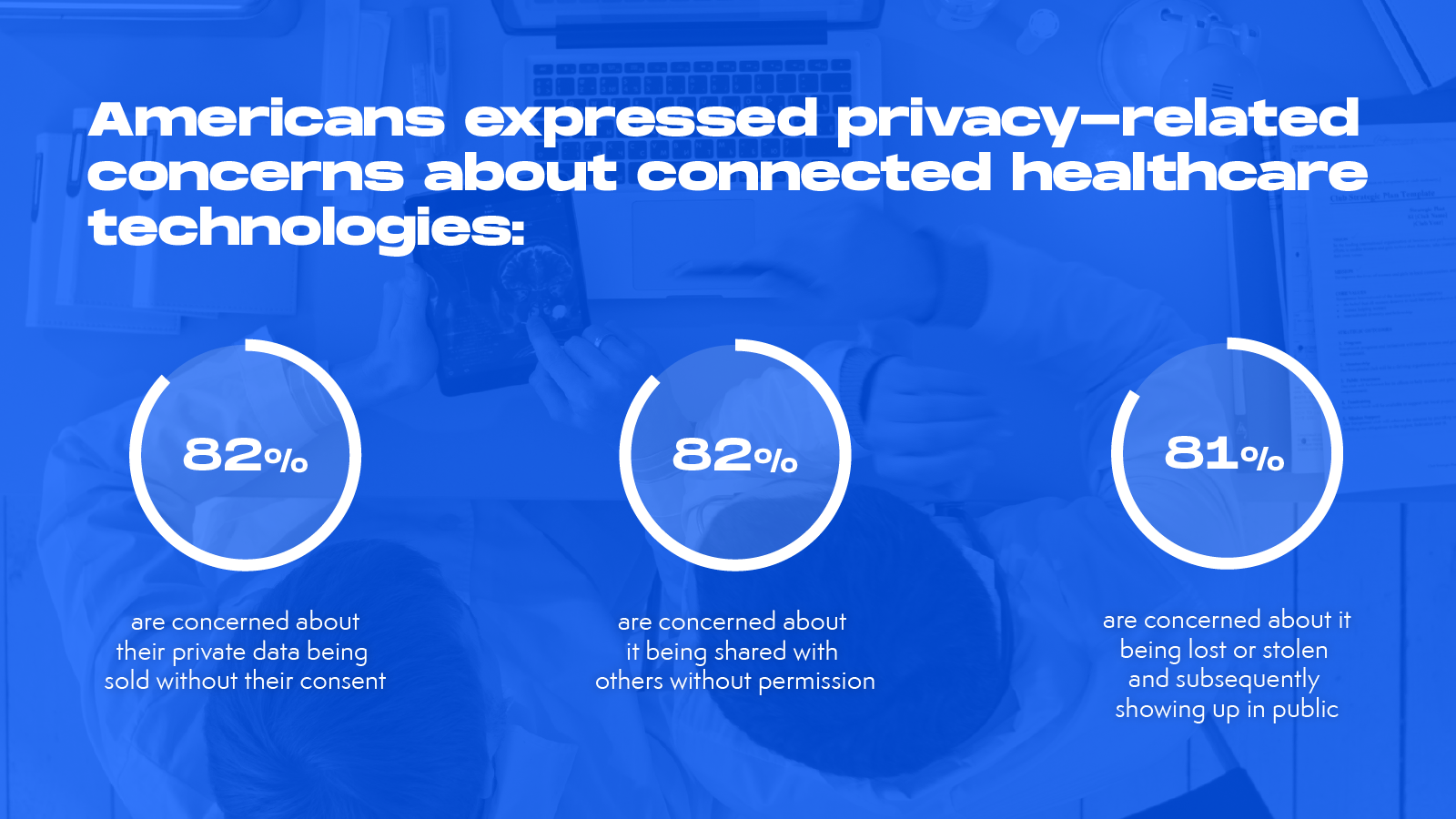
Given the increasingly pervasive role technology is playing in our daily lives, Trusted Future launched a comprehensive national survey of 2,414 Americans conducted by YouGov to better understand how consumers are using these technologies to improve health, the barriers they feel must be overcome, and the potential steps policymakers can take to further improve connected health outcomes.
Several high-level findings jump out: connected health technologies are already being widely adopted and impacting lives in positive and profound ways. And while harnessing these connected health innovations holds great promise for driving better care, and faster cures, whether and how quickly we achieve these gains is fundamentally dependent on a consumer’s ability to trust that technologies are effective, affordable, and designed with privacy and security safeguards built in.
Over the last few years, major breakthroughs in connected health technologies have enabled Americans to improve their health in previously unimaginable ways. Smartphones, for example, have put many of these advances right in the palms of our hands, on our wrists, and increasingly in our future. Wearables, connected devices, and software apps are empowering users to take greater control of their own health with tools that help users live longer, healthier, more fulfilling lives. Together these technologies are driving one of the biggest and most fundamental transformations in health care.


Given the increasingly pervasive role technology is playing in our daily lives, Trusted Future launched a comprehensive national survey of 2,414 Americans conducted by YouGov to better understand how consumers are using these technologies to improve health, the barriers they feel must be overcome, and the potential steps policymakers can take to further improve connected health outcomes.
Several high-level findings jump out: connected health technologies are already being widely adopted and impacting lives in positive and profound ways. And while harnessing these connected health innovations holds great promise for driving better care, and faster cures, whether and how quickly we achieve these gains is fundamentally dependent on a consumer’s ability to trust that technologies are effective, affordable, and designed with privacy and security safeguards built in.
FIVE KEY THEMES:
HOW RESPONDENTS VIEW THEIR CONNECTED HEALTH FUTURE
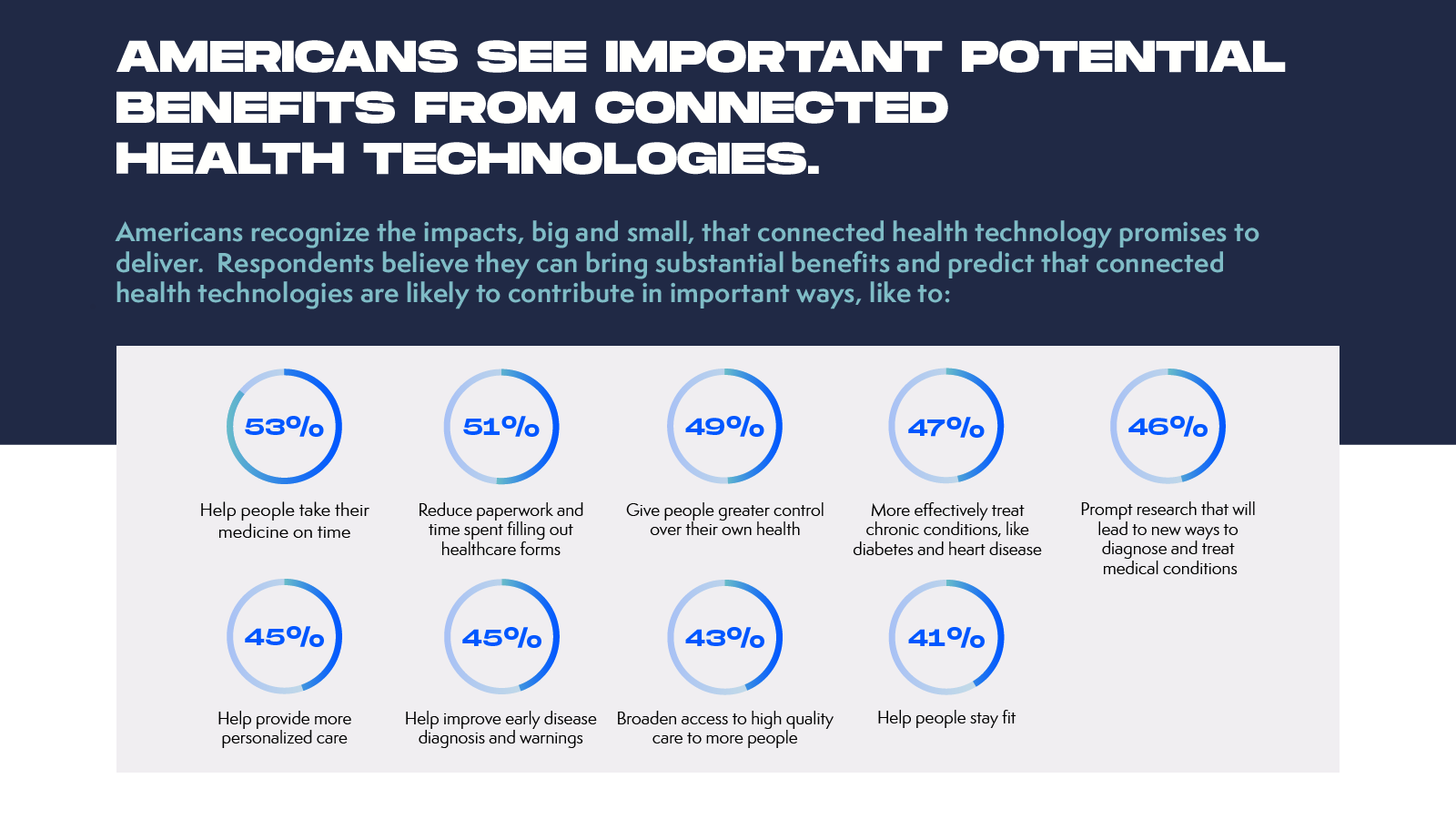
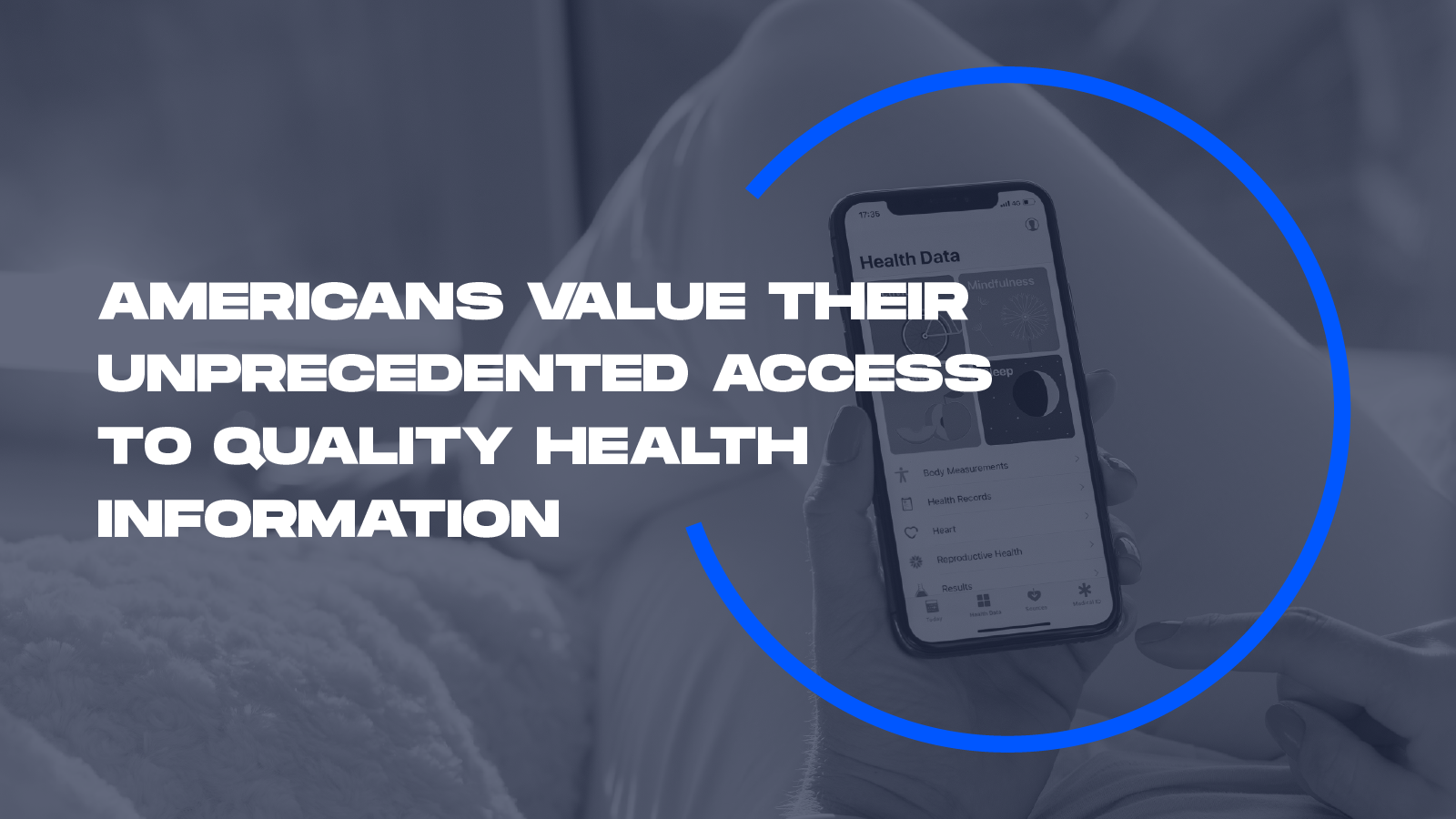
Americans today have unprecedented access to health information, whether it be answers to medical questions or insights from data collected by their wearable. When asked which features they find most attractive, (54% and 51%) expressed support for (1) smart apps or devices that can monitor activity to proactively detect heart and other health conditions and (2) for wearable health monitoring devices that help users improve sleep quality, fitness, or other aspects of their health. All of these technologies rely on sensors to generate health related data, which is then transformed into actionable insights enabling us to act upon it in meaningful and helpful ways. This and other health related data and information can be sensitive, must be protected, and must be stored – often directly on one’s personal smartphone. In fact, when asked how they use various technologies, 45% of respondents report that they currently or previously have stored health care data on their mobile devices like information from their doctor, hospital, a medical ID, health records, prescriptions, or a woman’s health status. This explains why 51% of respondents said they are more likely to trust technology when third parties are prevented from accessing the health information stored on their mobile device without their explicit permission, showing the importance of baking in privacy protections.

At the same time, 48% believe that connected health technology will also improve senior care. Falls are a leading cause of injury and death among Americans aged 65 and above and more than 25% of older adults will fall each year, according to the CDC, and Americans believe that connected health technologies have a role to play in keeping older adults safe. Smartwatches can now detect falls and call for help when needed, which 68% of respondents said was positive, including 81% of seniors over the age of 65. Americans also want our devices to be accessible to all users, including older adults and persons with disabilities, with 57% of respondents saying accessibility features built into technology, such as large fonts or text dictation, made a device more attractive.

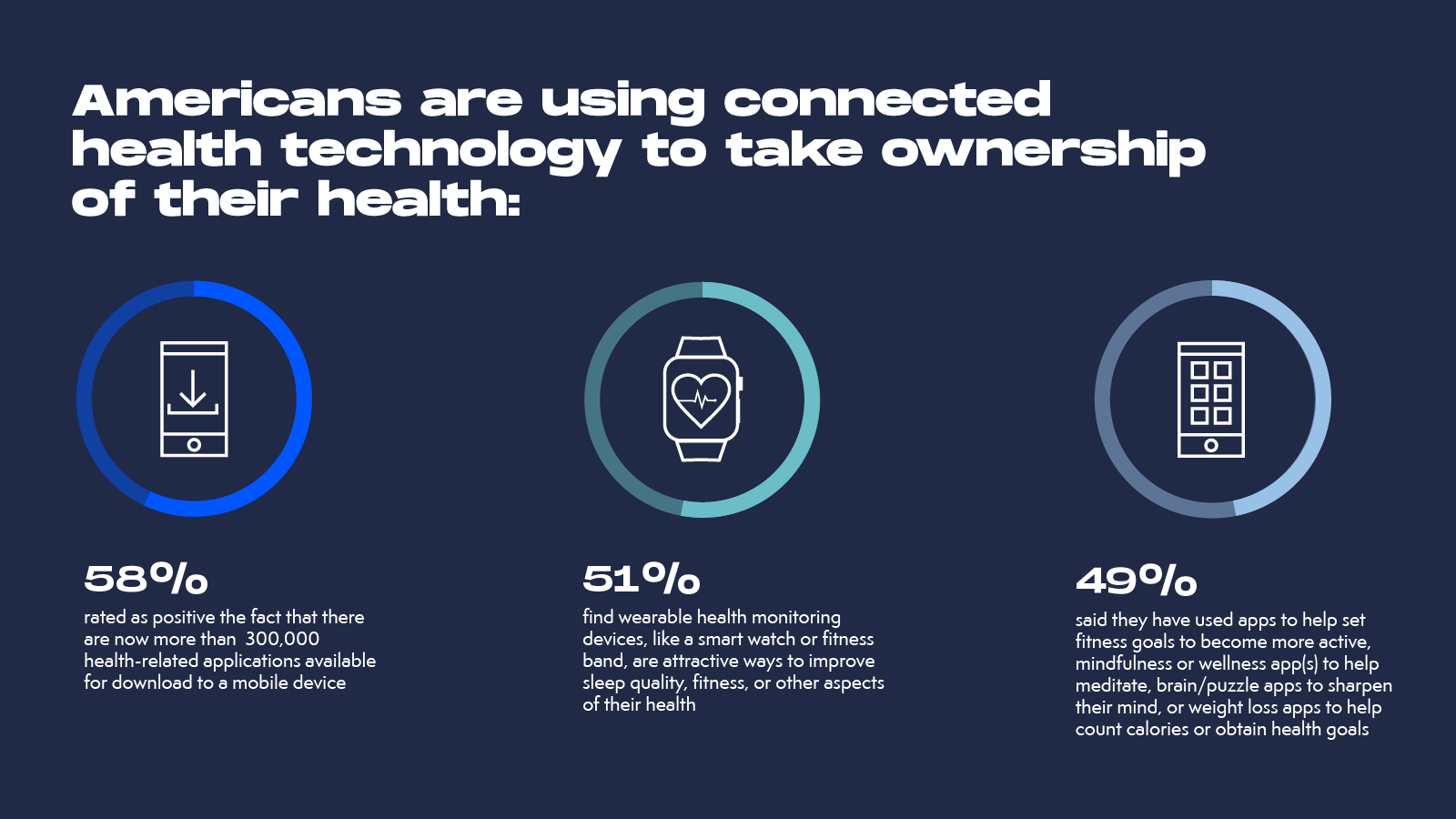
Mobile health technologies are being broadly used to track general fitness and health. To help tackle the challenge of getting more people to eat well and exercise, innovators have created more than 340 consumer wearable devices, more than 325,000 separate smartphone health apps, and are adding 200 new health apps each day. These new apps and wearables are leading to a new generation of empowered patients who are increasingly taking ownership of their own health beyond the walls of a doctor’s office. For example, researchers at Stanford found that the closer people track their weight-loss efforts with things like smart watches, digital scales and diet-monitoring apps, the more weight they tend to lose.
FIVE KEY THEMES:
HOW RESPONDENTS VIEW THEIR CONNECTED HEALTH FUTURE


Americans today have unprecedented access to health information, whether it be answers to medical questions or insights from data collected by their wearable. When asked which features they find most attractive, (54% and 51%) expressed support for (1) smart apps or devices that can monitor activity to proactively detect heart and other health conditions and (2) for wearable health monitoring devices that help users improve sleep quality, fitness, or other aspects of their health. All of these technologies rely on sensors to generate health related data, which is then transformed into actionable insights enabling us to act upon it in meaningful and helpful ways. This and other health related data and information can be sensitive, must be protected, and must be stored – often directly on one’s personal smartphone. In fact, when asked how they use various technologies, 45% of respondents report that they currently or previously have stored health care data on their mobile devices like information from their doctor, hospital, a medical ID, health records, prescriptions, or a woman’s health status. This explains why 51% of respondents said they are more likely to trust technology when third parties are prevented from accessing the health information stored on their mobile device without their explicit permission, showing the importance of baking in privacy protections.

At the same time, 48% believe that connected health technology will also improve senior care. Falls are a leading cause of injury and death among Americans aged 65 and above and more than 25% of older adults will fall each year, according to the CDC, and Americans believe that connected health technologies have a role to play in keeping older adults safe. Smartwatches can now detect falls and call for help when needed, which 68% of respondents said was positive, including 81% of seniors over the age of 65. Americans also want our devices to be accessible to all users, including older adults and persons with disabilities, with 57% of respondents saying accessibility features built into technology, such as large fonts or text dictation, made a device more attractive.


Mobile health technologies are being broadly used to track general fitness and health. To help tackle the challenge of getting more people to eat well and exercise, innovators have created more than 340 consumer wearable devices, more than 325,000 separate smartphone health apps, and are adding 200 new health apps each day. These new apps and wearables are leading to a new generation of empowered patients who are increasingly taking ownership of their own health beyond the walls of a doctor’s office. For example, researchers at Stanford found that the closer people track their weight-loss efforts with things like smart watches, digital scales and diet-monitoring apps, the more weight they tend to lose.
TRUST IS A CENTRAL ELEMENT
IN HOW BROADLY BENEFITS ARE SHARED
For connected health benefits to reach consumers, users must be able to trust that the devices are effective, affordable and designed to safeguard their privacy and data security. When deciding to adopt a new connected health technology, respondents rated the effectiveness of a connected health technology as their most important criteria—41% said it was either first or second in importance when they consider using a connected health technology; 29% and 30% said the same with respect to security and privacy.
People are unlikely to adopt potentially beneficial health technologies if they don’t trust that it will work effectively, or if it could put their personal privacy at risk. Respondents say they are concerned about ensuring that their health data is kept secure and private. This is understandable, healthcare data is some of the most personal and intimate information anyone keeps. Respondents expressed concern:
About their private data being sold without their consent (82%)
Shared with others without permission (82%), or
Being lost or stolen and subsequently showing up in public (81%)
CONSUMERS IDENTIFY KEY WAYS
TO FOSTER TRUST IN TECHNOLOGIES
The survey found that citizens are more likely to adopt potentially beneficial connected health technologies if they trust the technologies are effective, affordable, protect their privacy and data. When asked what could lead them to trust connected health technologies more, respondents delivered a consistent message regarding the importance of designing devices and services to protect user privacy and data.
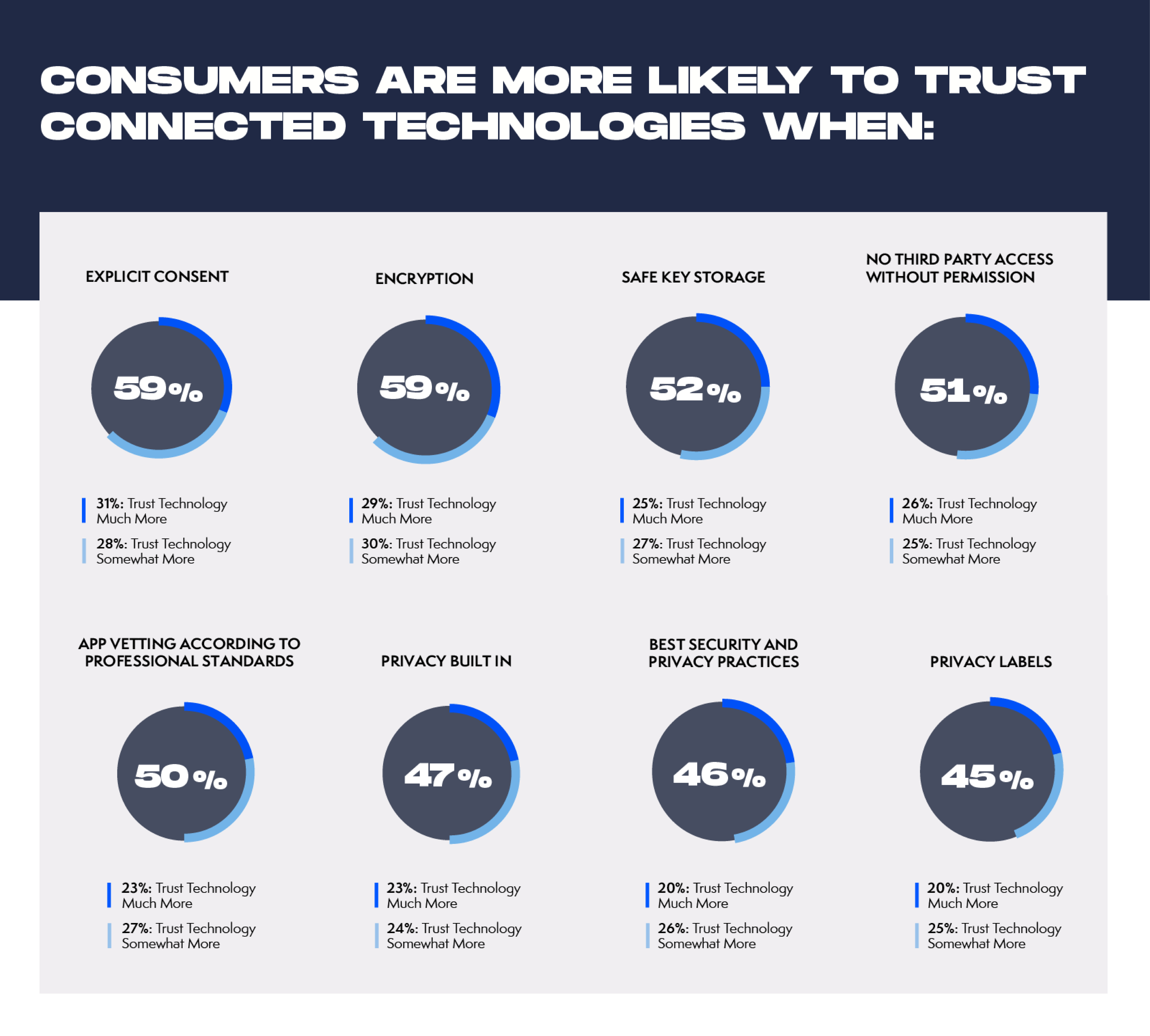
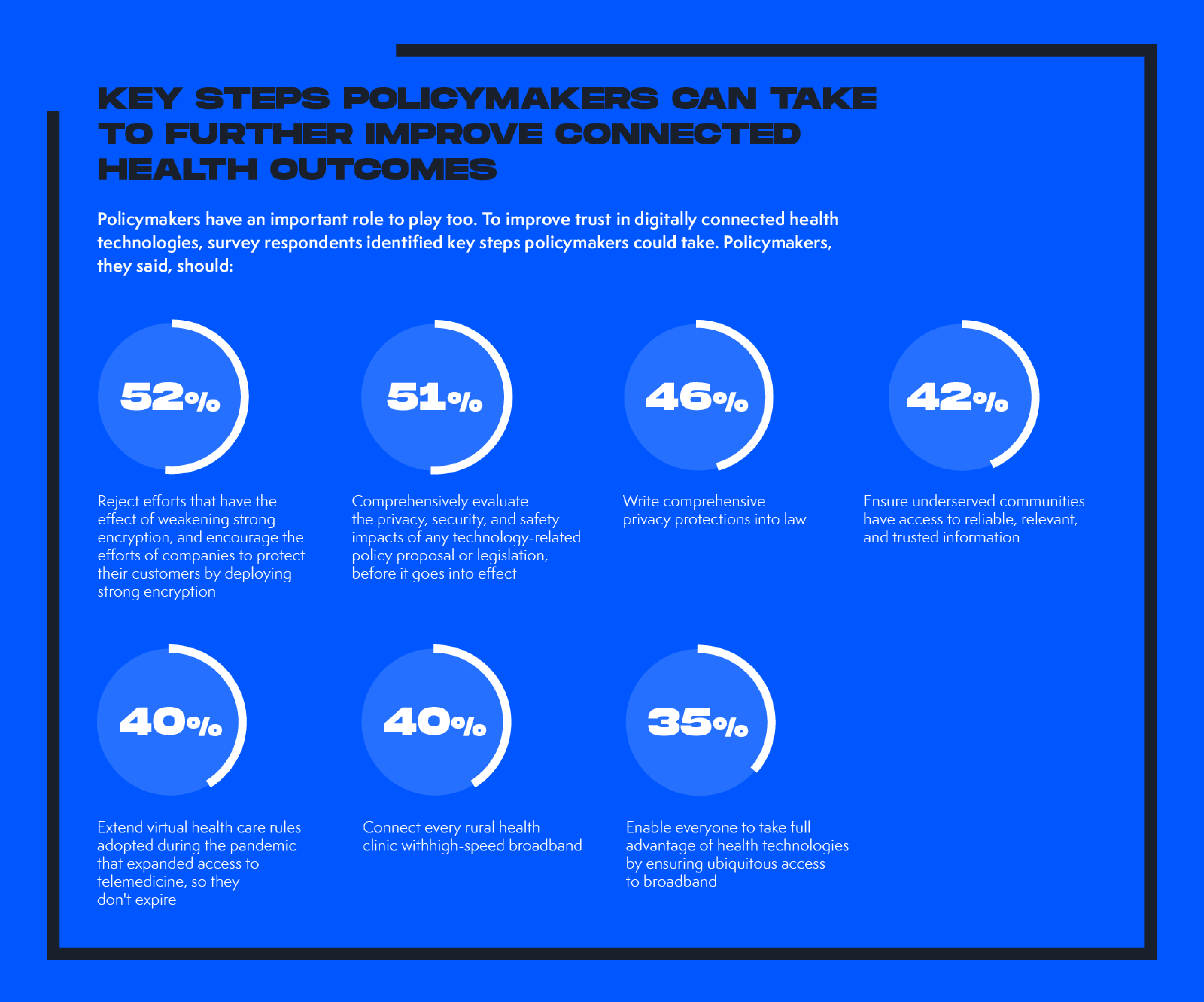
SUMMARY:
A MORE TRUSTED FUTURE IS A HEALTHIER FUTURE
Connected health technologies are already being widely adopted and impacting Americans in positive and profound ways. And while harnessing these connected health innovations holds great promise for driving better care, and faster cures, whether and how quickly we achieve these gains is fundamentally dependent on a consumer’s ability to trust that technologies are effective, affordable, and designed with privacy and security safeguards built in. Respondents want policymakers to support strong encryption, comprehensive privacy protections, expand equitable access to high-quality healthcare, and continue access to telehealth technologies.
